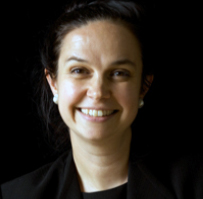
This is the 2nd COSMOS Research Community Workshop, a forum intended for exchange of research ideas and experimental methods among users and developers of the COSMOS testbed. The virtual workshop on Oct 14, 11:00AM-6:15PM EDT is aimed at discussing emerging research challenges in wireless networking, leading to an identification of experimental requirements to be served by the COSMOS testbed. This will be followed by a tutorial session for users of COSMOS, to be held on Oct 15 from 1:00-5:00PM EDT.
View the recordings of this workshop on the 2nd COSMOS Experimenters Workshop page.
OCTOBER 14th: WORKSHOP – PRELIMINARY AGENDA (Download)
SESSION 1 – OPENING SESSION (11:00 AM – 12:00 PM)
11:00 – 11:15AM
11:15 – 11:35AM
11:35AM – 11:50AM
11:50AM – 12:00PM
Welcoming Remarks
COSMOS Overview
Remarks from NSF
NGIatlantic.eu: Opportunities for US-EU Experimentation on Next Generation Internet
D. Raychaudhuri, Rutgers University
Gil Zussman, Columbia University
Alex Sprintson, NSF
Jim Clarke, NGI Atlantic
SESSION 2 – B5G WIRELESS TECHNOLOGY AND MMWAVE (12:00 PM – 3:00 PM)
12:00PM – 12:40 PM
12:40 – 1:00 PM
1:00 – 1:20 PM
1:20 – 1:40 PM
1:40– 2:00 PM
2:00 – 2:20 PM
2:20 – 2:40 PM
2:40 – 3:00 PM
Keynote Address: “Guessing Random Additive Noise Decoding (GRAND) “
Lunch Break
Opportunities and Challenges with 5G mmw
Millimeter-wave Directional Communications: Challenges, Opportunities and Emerging Capabilities in the COSMOS Testbed
Reliable 90% Coverage and Rate Prediction of mmWave Links using New Measurement-based Propagation Models
City–Scale Wireless Testbed: Research Challenges and Expectations from the Research Community
Fog Reinforcement in Dynamic Wireless Networks
Physical Network Infrastructure Monitoring on COSMOS
20 min break
Muriel Medard, Massachusetts Institute of Technology
Mikael Höök, Ericsson
Alberto Valdes-Garcia, IBM T.J. Watson Research Center
Reinaldo Valenzuela, Nokia Bell–Labs
Dola Saha, University at Albany, SUNY
Beatriz Lorenzo, University of Massachusetts
Jesse Simsarian, Nokia Bell–Labs
SESSION 3 – FUTURE MOBILE NETWORKS AND EDGE CLOUD (3:20 PM – 6:15 PM)
3:20 – 3:50 PM
3:50 – 4:10 PM
4:10 – 4:30 PM
4:30 – 4:50 PM
4:50 – 5:10 PM
5:10-5:30 PM
5:30 – 5:50 PM
5:50 – 6:15 PM
Keynote Address: “Towards Special-purpose Edge Computing”
Optical Transport Challenges in Supporting Low Latency, Dense Cells and New MEC Architectures
Clean G: Using NFV to Re-Architect the Packet Core and Control Plane for Cellular Networks
Virtual COSMOS with Mininet-Optical
Optical Technologies at CPQD: Facing the Challenges to Support Future Networks in Brazil
Mobile Edge Resource Management for Future Smart Disaster Response: Challenges and Directions
Object Detection in Smart City Intersections: Real-time Considerations
OPEN FORUM for Questions and Comments
Prashant Shenoy, University of Massachusetts
Marco Ruffini, Trinity College – Dublin
K.K. Ramakrishnan, University of California – Riverside
Bob Lantz, University of Arizona
Rafa Figueiredo, CPQD – Optical Technologies
Saptarshi Debroy, Hunter College – CUNY
Zoran Kostic, Columbia University
KEYNOTE SPEAKERS
 Title: Guessing Random Additive Noise Decoding (GRAND)
Title: Guessing Random Additive Noise Decoding (GRAND)
Abstract: Claude Shannon’s 1948 “A Mathematical Theory of Communication”; provided the basis for the digital communication revolution. As part of that ground-breaking work, he identified the greatest rate (capacity) at which data can be communicated over a noisy channel. He also provided an algorithm for achieving it, based on random codes and a code-centric maximum Maximum Likelihood (ML) decoding, where channel outputs are
compared to all possible codewords to select the most likely candidate based on the observed output. Despite its mathematical elegance, his algorithm is impractical from a complexity perspective and much work in the intervening 70 years has focused on co-designing codes and decoders that enable reliable communication at high rates.
We introduce a new algorithm for a noise-centric, rather than code-centric, ML decoding. The algorithm is based on the principle that the receiver rank orders noise sequences from most likely to least likely, and guesses noises accordingly. Subtracting noise from the received signal in that order, the first instance that results in an element of the code-book is the ML decoding. For common additive noise channels, we establish that the algorithm is capacity-achieving for uniformly selected code-books, providing an intuitive alternate approach to the channel coding theorem. We illustrate the practical usefulness of our approach and the fact that it renders the decoding of random codes feasible. The complexity of the decoding is, for the sorts of channels generally used in commercial applications, quite low, unlike code-centric ML.
This work is joint with Ken Duffy (Maynooth University).
Bio: Muriel Médard is the Cecil H. Green Professor in the Electrical Engineering and Computer Science (EECS) Department at MIT
and leads the Network Coding and Reliable Communications Group at the Research Laboratory for Electronics at MIT. She has served as editor for many publications of the Institute of Electrical and Electronics Engineers (IEEE), of which she was elected Fellow, and she has served as Editor in Chief of the IEEE Journal on Selected Areas in Communications. She was President of the IEEE Information Theory Society in 2012, and served on its board of governors for eleven years. She has served as technical program committee co-chair of many of the major conferences in information theory, communications and networking. She received the 2019 Best Paper award for IEEE Transactions on Network Science and Engineering, 2009 IEEE Communication Society and Information Theory Society Joint Paper Award, the 2009 William R. Bennett Prize in the Field of Communications Networking, the 2002 IEEE Leon K. Kirchmayer Prize Paper Award, the 2018 ACM SIGCOMM Test of Time Paper Award and several conference paper awards. She was co-winner of the MIT 2004 Harold E. Egerton Faculty Achievement Award, received the 2013 EECS Graduate Student Association Mentor Award and served as undergraduate Faculty in Residence for seven years. In 2007 she was named a Gilbreth Lecturer by the U.S. National Academy of Engineering. She received the 2016 IEEE Vehicular Technology James Evans Avant Garde Award, the 2017 Aaron Wyner Distinguished Service Award from the IEEE Information Theory Society and the 2017 IEEE Communications Society Edwin Howard Armstrong Achievement Award. She is a member of the National Academy of Inventors. She was elected Member of the National Academy of Engineering for her contributions to the theory and practice of network coding in 2020. She received in 2020 a doctorate honors cause from the Technical University of Munich.
Title: Towards Special-purpose Edge Computing
Abstract: In this talk, I will argue that the era of general-purpose computing is rapidly evolving into one of special-purpose computing due to technological advances that allow for inexpensive hardware devices and accelerators to optimize specific classes of application workloads. Edge computing has not been immune to these trends, and it is now feasible to specialize edge deployments for workloads such as machine learning analytics, speech, and augmented reality using low-cost specialized hardware. I will discuss the implications of these technology trends of the future mobile and IOT-based edge applications and present new challenges that will need to be addressed to fully exploit these trends.
Bio: Prashant Shenoy is currently a Distinguished Professor and Associate Dean in the College of Information and Computer Sciences at the University of Massachusetts Amherst. He received the B.Tech degree in Computer Science and Engineering from the Indian Institute of Technology, Bombay and the M.S and Ph.D degrees in Computer Science from the University of Texas, Austin. His research interests lie in distributed systems and networking, with a recent emphasis on cloud and green computing. He has been the recipient of several best paper awards at leading conferences, including a Sigmetrics Test of Time Award. He serves on editorial boards of the several journals and has served as the program chair of over a dozen ACM and IEEE conferences. He is a fellow of the ACM, the IEEE and the AAAS.
OCTOBER 15th: TUTORIAL FOR COSMOS TESTBED USERS
This tutorial will introduce the NSF-funded PAWR COSMOS (“Cloud enhanced Open Software defined MObile wireless testbed for city-Scale deployment”) platform. COSMOS is a joint project involving Rutgers, Columbia, and NYU along with several partner organizations including New York City, City College of New York, University of Arizona, Silicon Harlem, and IBM. The COSMOS advanced wireless testbed is being deployed in New York City with technical focus on ultra-high-bandwidth and low-latency wireless communications with tightly coupled edge computing, and emphasis on the millimeter-wave (mmWave) radio communications and dynamic optical switching.
The first part of the tutorial will focus on the SDR aspects, where attendees will learn the basics of testbed usage and the OMF testbed management framework. These include how to manage reservations, image the nodes, orchestrate their experiments and collect measurements. The second part of the tutorial will introduce the COSMOS Education Toolkit that provides an experimentation curriculum that blends the three disciplines of mathematics, science, and computer science for K-12 students. The third part of the tutorial will focus on experimentation with heterogeneous cloud computing capabilities (i.e., CPUs, GPUs, and server-side FPGAs) of the COSMOS platform. To illustrate the use of distributed computational resources, attendees will deploy the OpenAirInterface (OAI) SDR-based LTE experimental ecosystem by using the Open Source MANO (OSM) orchestrator. The fourth part of the tutorial is devoted to optical experimentation and will show the tools and services designed to configure and monitor the performance of optical paths and topologies of the COSMOS testbed. Customized python scripts along with a Ryu OpenFlow controller will be used to demonstrate the programmability of the COSMOS optical network.
Tutorial Agenda (all time slots EDT) (Download)
|
1:00 – 1:05pm |
Welcome Remarks |
Gil Zussman, Columbia University |
|
1:05 – 1:15pm |
Basic Testbed Usage with OMF |
Michael Sherman, WINLAB/Rutgers University |
|
1:15 – 1:30pm |
Nilanjan Paul, WINLAB/Rutgers University |
|
|
1:30 – 1:45pm |
Nilanjan Paul, WINLAB/Rutgers University |
|
|
1:45 – 2:00pm |
Tingjun Chen, Columbia University |
|
|
2:00 – 2:15pm |
Manav Kohli, Columbia University |
|
|
2:15 – 2:25pm |
Panagiotis Skrimponis, NYU |
|
|
2:25 – 2:35pm |
Education Toolkit Experiments |
Panagiotis Skrimponis, NYU |
|
2:35 – 3:00pm |
Coffee Break + Q&A |
All |
|
3:00 – 3:15pm |
28 GHz Channel Estimation/Sounding |
Tingjun Chen, Columbia University |
|
3:15 – 3:30pm |
Prasanthi Maddala, WINLAB/Rutgers University |
|
|
3:30 – 3:45pm |
Panagiotis Skrimponis, NYU |
|
|
3:45 – 4:00pm |
Jiakai Yu, University of Arizona |
|
|
4:00 – 4:20pm |
Michael Sherman, WINLAB/Rutgers University |
|
|
4:20 – 4:40pm |
Michael Sherman, WINLAB/Rutgers University |
|
|
4:40 – 5:00pm |
Q&A and Closing Remarks |
All |



